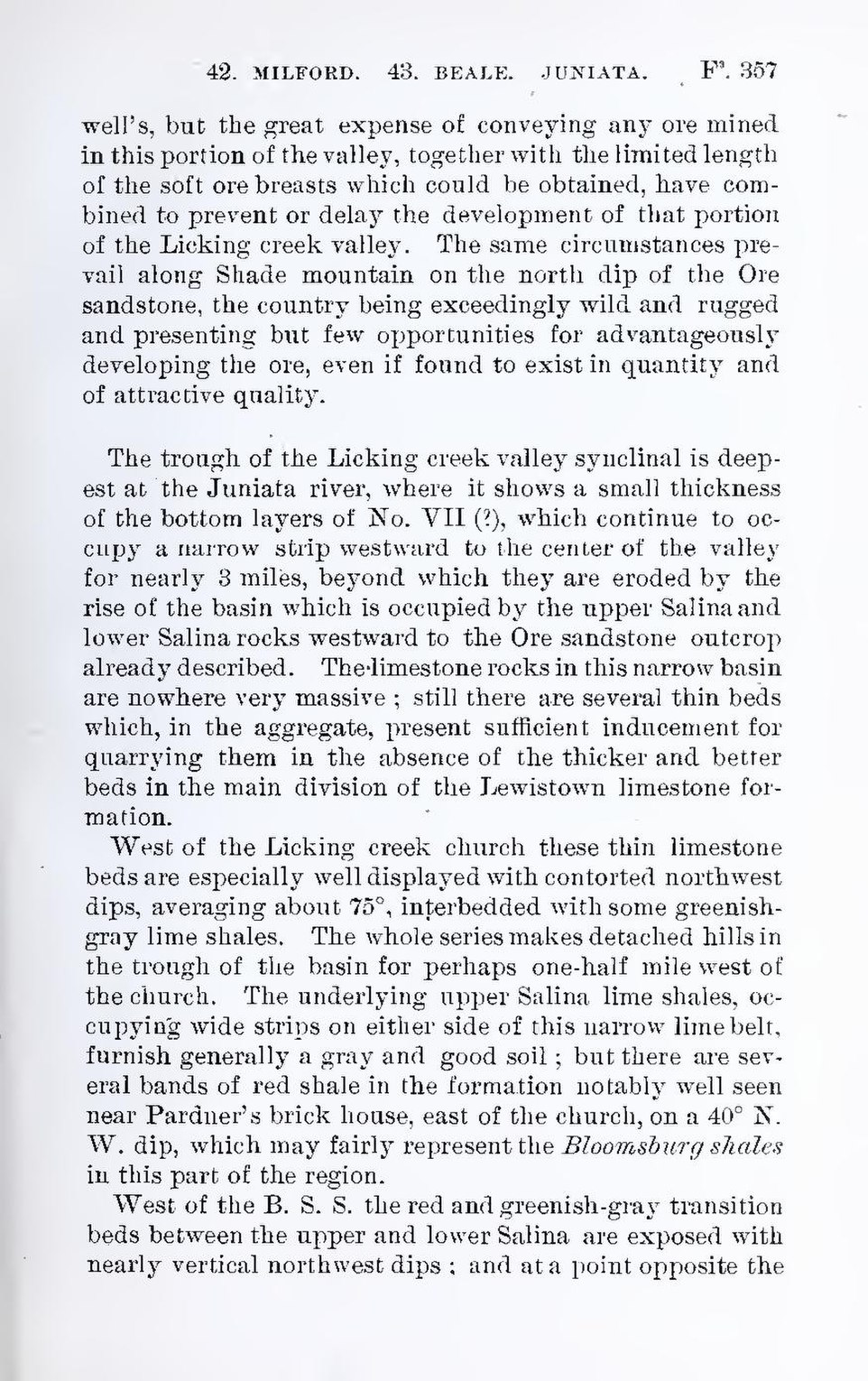well’s, but the great expense of conveying any ore mined in this portion of the valley, together with the limited length of the soft ore breasts which could be obtained, have combined to prevent or delay the development of that portion of the Licking creek valley. The same circumstances prevail along Shade mountain on the north dip of the Ore sandstone, the country being exceedingly wild and rugged and presenting but few opportunities for advantageously developing the ore, even if found to exist in quantity and of attractive quality.
The trough of the Licking creek valley synclinal is deepest at the Juniata river, where it shows a small thickness of the bottom layers of No. VII (?), which continue to occupy a narrow strip westward to the center of the valley for nearly 3 miles, beyond which they are eroded by the rise of the basin which is occupied by the upper Salina and lower Salina rocks westward to the Ore sandstone outcrop already described. The limestone rocks in this narrow basin are nowhere very massive; still there are several thin beds which, in the aggregate, present sufficient inducement for quarrying them in the absence of the thicker and better beds in the main division of the Lewistown limestone formation.
West of the Licking creek church these thin limestone beds are especially well displayed with contorted northwest dips, averaging about 75°, interbedded with some greenish-gray lime shales. The whole series makes detached hills in the trough of the basin for perhaps one-half mile west of the church. The underlying upper Salina lime shales, occupying wide strips on either side of this narrow lime belt, furnish generally a gray and good soil; but there are several bands of red shale in the formation notably well seen near Pardner’s brick house, east of the church, on a 40° N. W. dip, which may fairly represent the Bloomsburg shales in this part of the region.
West of the B. S. S. the red and greenish-gray transition beds between the upper and lower Salina are exposed with nearly vertical northwest dips; and at a point opposite the
